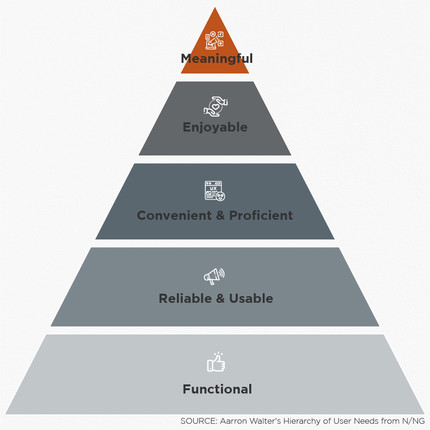

How to keep your business open digitally when stores are closed
Now more than ever, consumers are online purchasing the things they want and need. A recent survey found U.S. adults are spending up to 30% more online. During a time when the vast majority of stores are closed, brands need to take this time to dive deeper into their website and how it is meeting the needs of their customers. Poor user experience can lead to lost sales which, especially during these times, can be detrimental to a business’s success.
As consumers look for ways to feel somewhat “normal” again through shopping routines, here are some ways to reduce friction and enhance the digital experiences for all shoppers during COVID-19.
Make Sure It’s Functional

This is a basic need for consumers coming to your site. Does it currently work and allow users to complete their tasks? Ensure everything users click on will take them to where they intend to go and that there are little to no bugs that create barriers for your users.
Tips:
- Make sure your website is functional and accessible across varying devices (desktop, tablet, mobile, screen readers), as well as across browsers. Validate with a thorough QA (quality assurance) to test before launching any new updates.
- Test regularly with users to see if your website allows them to complete tasks efficiently; identify any opportunities or workarounds to make iterative improvements.
Ensure It Is Reliable & Usable
Is your website providing reliable content that’s helpful and relevant?
Tips:
- Inform users that your company is still operating, and include updated operational hours and that you are following CDC recommended guidelines. Companies like Amazon and Nordstrom are answering some consumer concerns through their FAQ page.
- Show delivery or curbside pick-up availability right away before they begin shopping online. Meijer, for example, partnered with Shipt shoppers who text customers in real-time letting them know if items are out of stock and when the order will be ready for pick-up.
- Inform users when items are out of stock earlier in their virtual shopping journey (on product listing pages, as well as in cart) and then offer alternative options to reduce frustrations.
- Let shoppers know that items are restocked regularly and to check back for availability.
- Let customers know if shipping is delayed in order to keep their employees safe within the fulfillment centers, especially if it’s a “non-essential” item to set user expectations.
- Use a sensitive tone and write with compassion to demonstrate that not only is your brand listening, but you are human. A study done by Edelman, based on 12,000 interviews across several countries, shows that 71% of consumers will “lose trust in that brand forever if they perceive that the brand is putting profit over people.”
Keep Navigation Convenient & Proficient
How easy is your website or digital platform for users to use quickly and accurately? Is it accessible and useful and does it build credibility? Does it empower people to do things better than they could before?
Tips:
- Ensure the website navigation and structure of the site are easy to follow.
- Offer free shipping and discounts for first-time purchases along with clear and extended return policies.
- Provide users the ability to “purchase from past orders” or review their order history to streamline the time needed to search for items.
- Provide consumers with transparency and reassurance by showing them where a shipment is and the progress of their order to ease their mindset.
- Make it seamless for consumers to add optional tips by already calculating percentages for them. Not only does this require less thinking for consumers, but it’s also beneficial for delivery workers.
- Offer users a way to create an account and securely save their payment methods for repeatable usage in the future.
Make the Experience Enjoyable
Users will invest time and money into brands and recommend them to friends and family if it brings delight and simplicity to their life.
Tips:
- Implement guidance for your users on your site if they run into errors.
- Add navigational hints through microcopy to address questions and concerns that your consumers might have during this time.
- Include subtle interactions and powerful imagery to tell a story.
- Provide a seamless omnichannel experience from site shopping to delivery or curbside pick-up with ongoing communication with your users, so they’re not left in the dark.
Provide Something That Is Meaningful
Does your brand provide an experience that resonates with your users? Was your brand there for them when they needed it most?
Tips:
- Don’t add to the noise just to help boost your SEO, provide content that gives reassurance and confidence in your brand to build an ongoing relationship.
- For more insights on how to create engaging content that resonates with your audience, reference our previous blog post.
Of course, with all things digital, it’s nimble and iterative. Brands must continue to push their SEO strategy with current adjustments and bring brand visibility to consumers at the right times, while continuing to run lean user research and testing methods remotely to gain actionable insights.
By ensuring that users have a frictionless experience now amid a pandemic, it encourages them to return to this experience, long after the social distancing quarantine is over. While everyone adjusted (or is still adjusting) to this situation, brands that are successful and will be seen as leaders who, in the end, are the ones putting people first.